Remembering 1994 Northridge earthquake 29 years later

Fox 11 News in Depth Segment 4: Preview of Northridge Earthquake 25th Anniversary Special.
Fox 11 News in Depth Segment 4: Preview of Northridge Earthquake 25th Anniversary Special.
LOS ANGELES - Tuesday marks 29 years since the deadly Northridge earthquake that changed the San Fernando Valley forever.
A 6.7 magnitude earthquake struck the region at 4:31 a.m. on January 17, 1994. It lasted for 30 seconds or more, and several aftershocks followed within minutes. In homes throughout the area, dishes fell off shelves, fixtures swayed and furniture slid across floors.
The state said at least 57 died in the earthquake, though a study issued the following year put the death toll at 72, including heart attacks. About 9,000 were injured, and the damage costs were estimated at $25 billion.
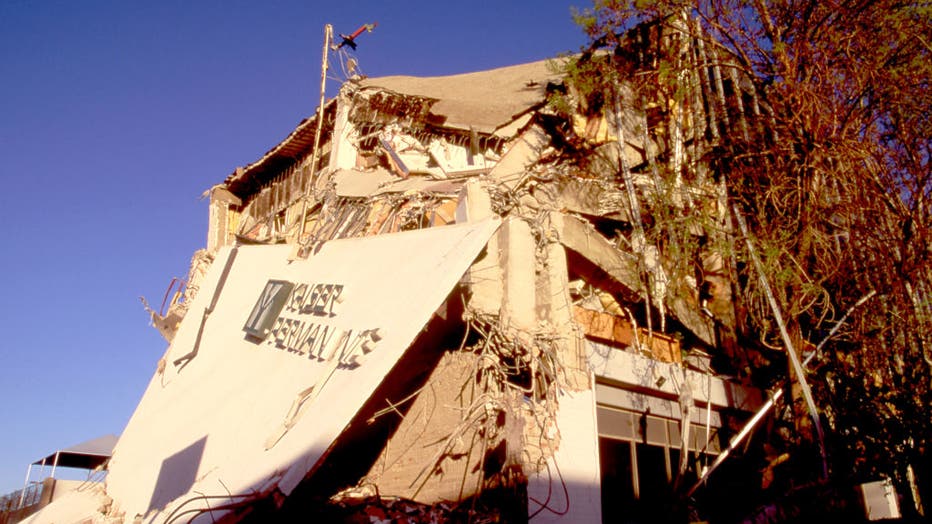
The Kaiser Permanente Clinic at Granada Hills on Balboa Boulevard with the end walls collapsed and separated from the main unit over the full height of the building after the 1994 Northridge earthquake on January 17, 1994 in Granada Hills, California
According to Earthquake Country Alliance , 82,000 residential and commercial units and 5,400 mobile homes were damaged or destroyed, nine parking structures toppled, nine hospitals were evacuated due to structural or other problems, seven key freeway bridges collapsed, and hundreds more were damaged.
The quake, centered in the San Fernando Valley, buckled overpasses on three freeways, trapping motorists in tons of concrete rubble. It severed Interstate 5, California’s main north-south highway, and Interstate 10, the nation’s busiest freeway.
RELATED COVERAGE:
The quake derailed a freight train carrying hazardous material and briefly closed several airports, including Los Angeles International. Power and telephone service were lost throughout Southern California.
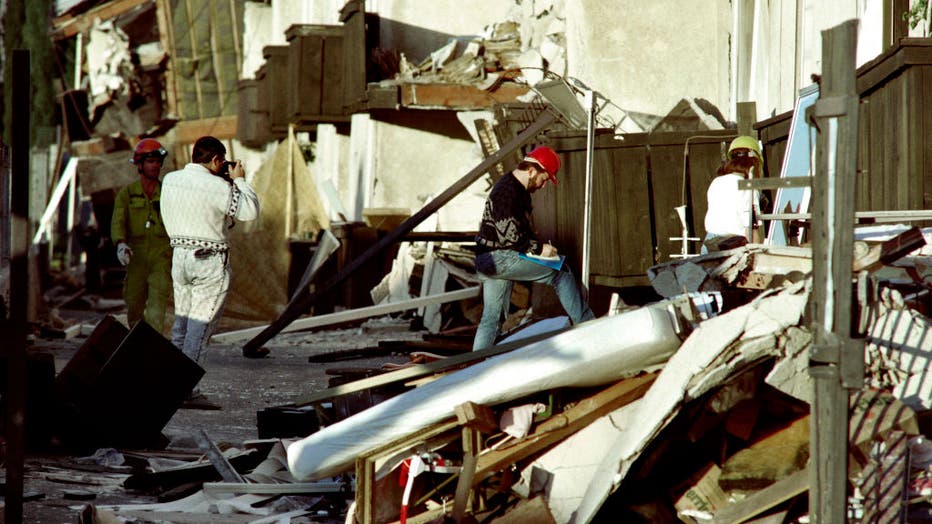
Rescues workers view the destruction of the Northridge Meadows Apartments early on January 18, 1994 after an earthquake collapsed the structure January 17. (Photo by BOB PEARSON/AFP via Getty Images)
Los Angeles Mayor Richard Riordan and California Gov. Pete Wilson declared states of emergency, and then-President Bill Clinton said he expected to issue a federal disaster declaration later in the day.
A swarm of aftershocks, some as strong as 5 on the Richter scale, jostled the region throughout the morning, and seismologists said they could continue for several days.
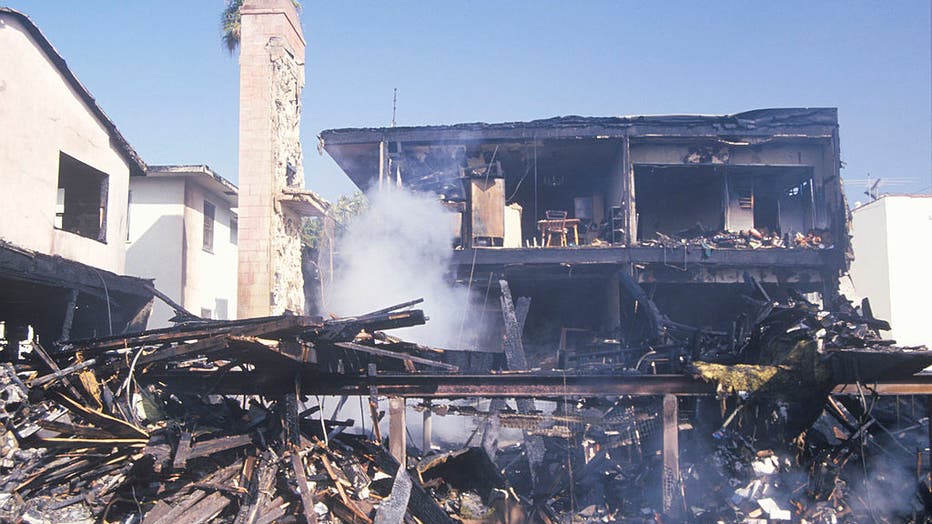
An apartment building on fire as a result of the Northridge earthquake in 1994 (Photo by: Joe Sohm/Visions of America/Universal Images Group via Getty Images)
Six people were arrested in downtown Los Angeles for looting, and an undetermined number of others were arrested in the San Fernando Valley.
Perhaps the most dramatic damage from the quake was the freeway destruction, which threatened to cripple the region’s transportation system.
On the Santa Monica Freeway, Interstate 10, which ferries hundreds of thousands of commuters between the west side of Los Angeles and downtown every day, an overpass at Fairfax Avenue buckled like a wave, dropping to about six feet from street level.
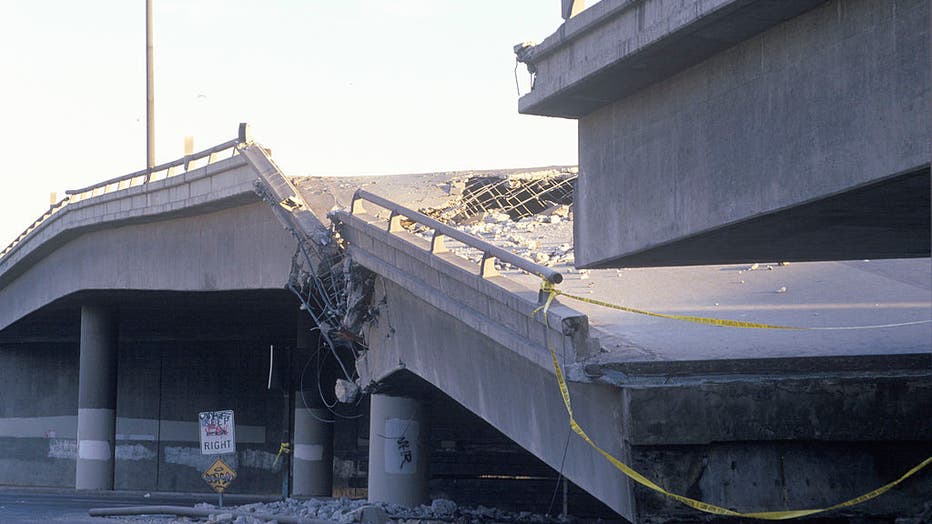
Overpass that collapsed on Highway 10 in the Northridge/Reseda area at the epicenter of earthquake in 1994 (Photo by: Joe Sohm/Visions of America/Universal Images Group via Getty Images)
More horrific was the collapse of a four-level intersection of Interstates 5 and 14, known as the Golden State and Antelope Valley freeways. Cars could be seen crushed beneath the collapsed intersection; huge slabs of steel-reinforced concrete were splayed at crazy angles.
The collapse was not far from the scene of a similar disaster in 1971.
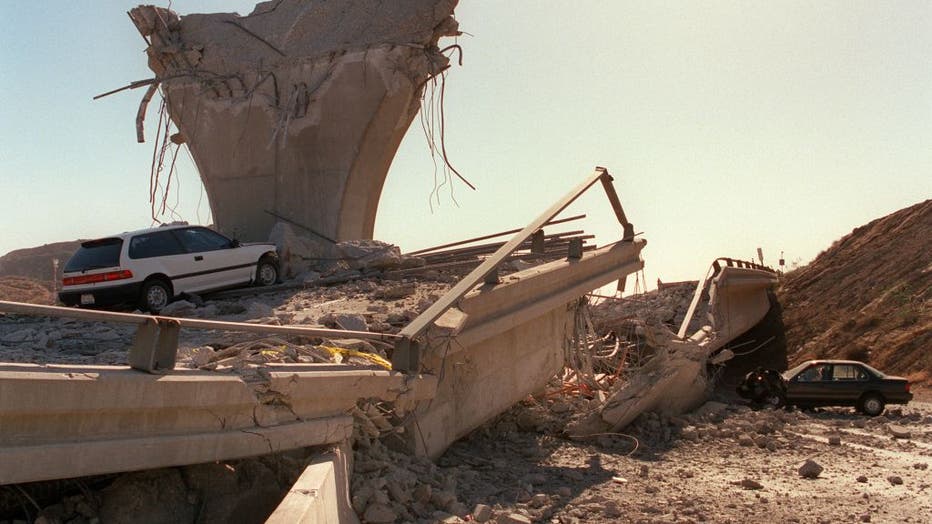
Cars lie smashed by the collapsed Interstate 5 connector few hours after Northridge earthquake, on January 17, 1994, in Sylmar, California. (Photo by JONATHAN NOUROK/AFP via Getty Images)
A portion of state Route 118, the Simi Valley Freeway, also collapsed.
The last big earthquake to hit the area before this had been on June 28, 1992. The Landers quake, east of Los Angeles, measured 7.5 on the Richter scale and was followed a few hours later by a magnitude 6.6 quake in the Big Bear area.
The Associated Press contributed to this report.

